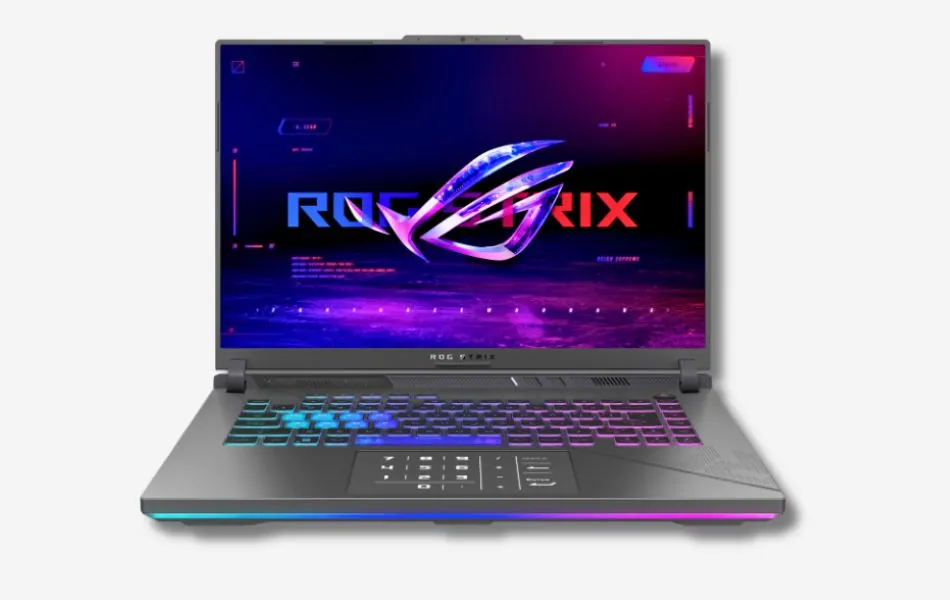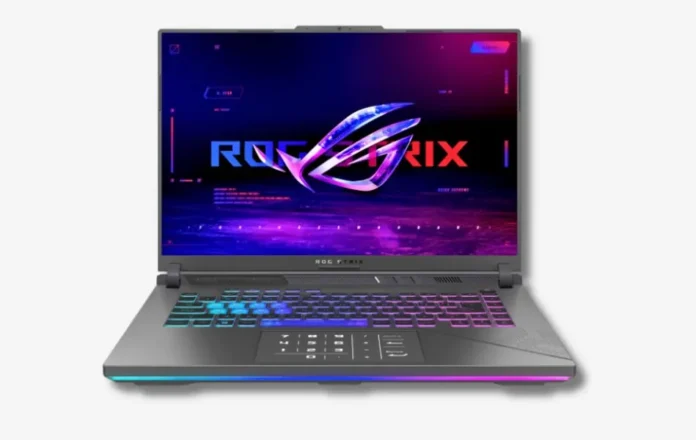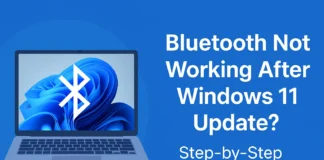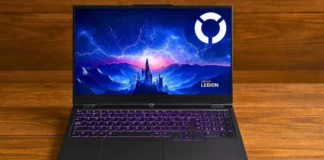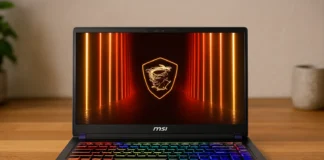The ASUS ROG Strix G16 (2025) is a powerful laptop that delivers smooth gaming and strong performance for a variety of tasks. Whether you’re playing the latest games, working on creative projects, or just using it for everyday computing, it’s designed to keep up without slowing down.
In this article, we’ll go over the full specifications and benchmark results so you can see exactly how it performs in real-world situations and decide if it’s the right fit for you.
ASUS ROG Strix G16 Release Date: January 2024Model: G614JIR-AS94Laptop Type: GamingSeries: ROG StrixAvailable on: Key Features Model Name ASUS ROG Strix G16 Processor 14th Gen Intel Core i9-14900HX Frequency/Core 2.2 GHz (36MB Cache, up to 5.8 GHz, 24 cores, 32 Threads) RAM 16 GB GDDR5, 5600 MHz Storage 1TB PCIe 4.0 NVMe M.2 SSD Graphics Card NVIDIA GeForce RTX 4070 Display 16-inch, QHD+ 16:10 (2560 x 1600, WQXGA) Operating System (OS) Windows 11 Home Weight 2.50 Kg (5.51 lbs) Battery 90WHrs, 4S1P, 4-cell Li-ion Microsoft Office Office Home and Student
Full Specifications Processor (CPU) Processor Model Name 14th Gen Intel Core i9-14900HX Processor Speed 2.2 GHz – 5.8 GHz Cores 24 (8 P-cores and 16 E-cores) Threads 32 L3 cache 36 MB Cache Fabrication process 10 nm
Video Card Graphics Processor NVIDIA GeForce RTX 4070 Graphics Memory Capacity 8 GB Graphic Type Dedicated Memory Type GDDR6 GPU Frequency 2175MHz Boost Clock+50MHz OC, 115W+25W Dynamic Boost
RAM Memory Capacity 16 GB Memory Type DDR5 Frequency 5600 MHz Memory Slots 2 Upgradable Yes Maximum RAM size 64 GB
Storage Storage Capacity 1TB Storage Type SSD (M2) Drive Interface PCI Express Channels 1×1024 GB Total Slots 2 Upgradable Yes
Display Screen Size 16-inch Screen Resolution 2560 x 1600 pixels Refresh Rate 240 Hz Display Screen Type IPS Display Screen Technology LCD HDR support Yes, Dolby Vision PPI 189 ppi Pantone Validated Yes Response Time 3ms Touch Input No Coating Matte Maximum brightness 300 nits Contrast 1560:1 sRGB color gamut 100% Sync technology G-Sync
Battery Capacity 4 Cell, 90WHrs Full charge time 1:40 hr Battery type Li-Ion Removable No Fast charging Yes USB power delivery Yes Charging connector location Left Charging power 280 / 330 W Output 20V DC, 14A Charger weight 834 / 954 grams
Frame The weight 2.5 kg (5.51 lbs) Dimensions 354 x 264 x 22.6-30.4 mm Area 935 cm2 (144.8 inches2 ) Screen-to-body ratio ~79.4% Side frames 4.7 mm Colors Black Transformer No Screen opening angle 135°
Thermal Management Cooling type Active Liquid metal Yes Evaporation chamber No Number of coolers 3 Noise level 44 dB
Sound Audio Chip Smart Amp Audio Format 2.0 (2 tweeters and 0 woofers) Speaker Power 2x2W Dolby Atmos Yes Max. volume 77 dB microphones 2 Noise-canceling technology Yes, AI Audio Recording Yes
Communications WiFi version v6E (802.11ax) (Triple band) Bluetooth v5.3 The fingerprint scanner No Drive No Webcam Above the display Webcam Resolution 720P HD, 1280 x 720
IO and Ports USB-A 2x USB 3.2 Gen 2 USB Type-C 1x USB 3.2 Gen 2 Thunderbolt 1x Thunderbolt 4 support DisplayPort HDMI 1x HDMI 2.1 FRL Display port No VGA No Audio port (3.5mm) Yes Ethernet (RJ45) Yes, 1x RJ45 LAN SD card reader No Separate charging port Yes
Keyboard and Touchpad Key type Island Numeric block No Backlight Yes, Chiclet Key travel 1.77 mm Keyboard Type Gaming Keyboard Layout QZERTY The size 13.0 x 8.5 cm Surface Glass Windows Precision Yes
Benchmark Category Benchmark/Test Score/Result CPU Performance Geekbench 6.3 (Single-Core) 2,971 Geekbench 6.3 (Multi-Core) 18,470 Cinebench R23 (Single-Core) 2,346 Cinebench R23 (Multi-Core) 36,577 GPU Performance Geekbench 6.3 Compute (OpenCL) 116,018 Geekbench 6.3 Compute (Vulkan) 114,377 Gaming Performance Overwatch 2 (1920×1200, Ultra Settings) 165 FPS Shadow of the Tomb Raider (1080p, Max) 118 FPS Grand Theft Auto V (1080p) Performance slightly lower compared to some previous-gen GPUs Storage Performance Sequential Write Speed Approximately 3,400 MB/s Sequential Read Speed Approximately 5,000 MB/s
Source : Geek bench
CPU Performance
GPU Performance
Storage Performance
